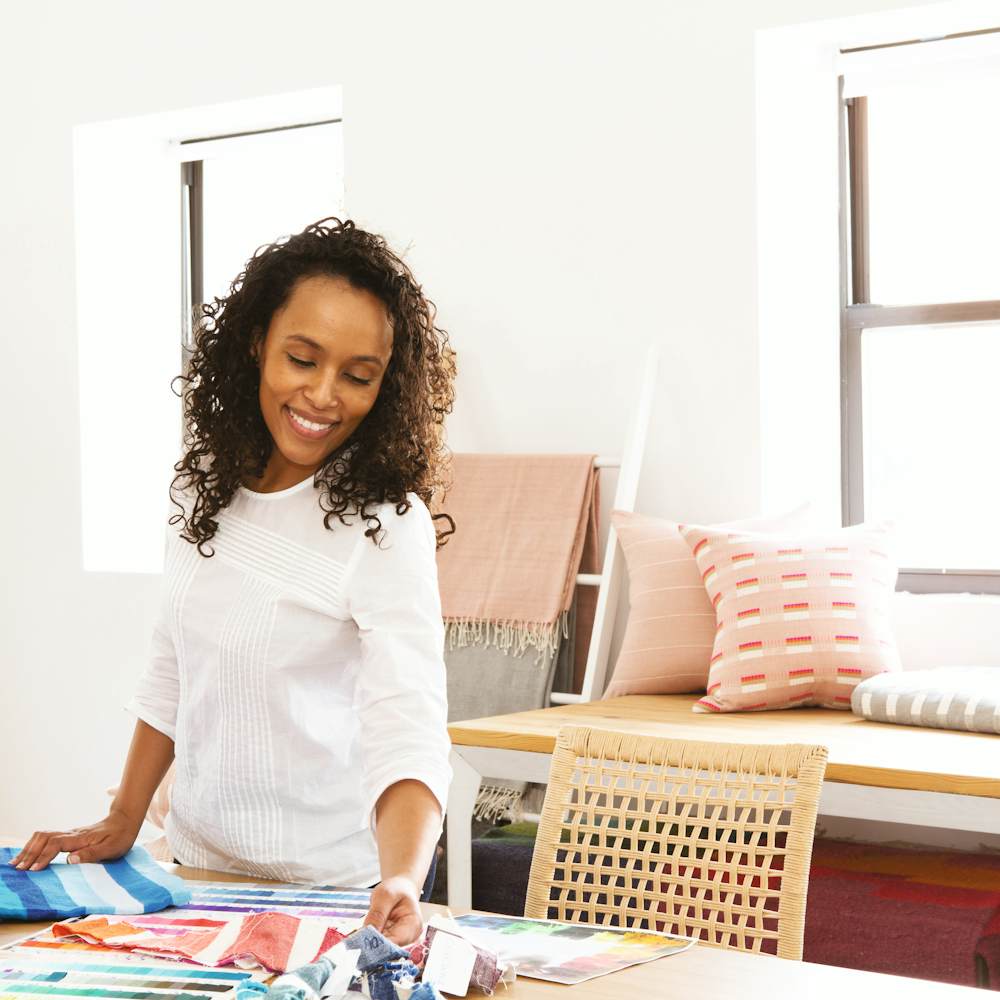Celebrating women in design
From our president Debbie Propst to the brilliant designers whose work we showcase and sell, we’ve always believed in the power of women. In honor of International Women’s Day, we’d like to introduce you to just a few of the many designers we’re honored to work with, who’ve each shared their thoughts on working as a female designer today.

Chris Halstrøm in conversation with Lora Appleton
Based in Copenhagen, Chris Liljenberg Halstrøm operates a studio where she conceives and designs furniture, textiles, and art. Working with brands like Skagerak, Design Within Reach, and others, she’s known for work characterized by restraint, deep attention to materials, and the haptic experience users have with her furniture. At her Copenhagen studio, she chatted with design entrepreneur Lora Appleton, founder and creative director of kinder MODERN and Female Design Council.
On turning your difference into your driving force:
- Create interesting and relevant objects
- Find your role models, become a leader
- Defend your design choices
- Have fun while you work
- Support those around you
“I’m convinced that if people can leave behind judgmental behavior, they’ll set themselves free to lead fuller lives.” — Chris Halstrøm

Hana Getachew, Bolé Road Textiles
Five years ago, New York designer Hana Getachew left her career in commercial interior design to start Bolé Road Textiles, merging her design expertise with her love of the vibrant, handwoven Ethiopian fabrics she’d grown up with. Hana was born in Addis Ababa, Ethiopia, but moved to Montreal, and then New York, as a child. Her designs for Bolé Road are an homage to her cultural inheritance as well as a reflection of her own global modern aesthetic.
DWR: What do you hope to see change in design for women and people of color?
Hana Getachew: Everything. Whole, systemic change. After the murder of George Floyd last June, I called colleagues and clients, and said, ‘What are we going to do?’ Together we formed an Equity Council for the IIDA (International Interior Design Association). We’ve identified four pillars of change – diversity, communication, training, and inclusion – for the industry to embrace in order to change the culture of exclusion.
I could never have imagined the moment I’m in now. I never saw myself here. I had aspired to be in DWR but I never thought it was possible. After George Floyd, all the support I received as the proprietor of a black-owned business definitely changed my trajectory.
I’m now realizing that it’s okay to think big!
“As a woman in interior design, my strength was listening. Because I wasn’t overconfident, I was more willing to hear other perspectives and lean towards collaboration.” — Hana Getachew

Sarita Posada and Sophie Lou Jacobsen, Studio Sayso
In 2018, New York product designer Sophie Lou Jacobsen and interior designer Sarita Posada joined forces to create a collection of colorful furniture that draws on the vibrancy of Posada’s native Colombia as well as 1930s French and 1970s Italian design. Their exclusive collection for DWR features clever nesting tables, stools, and poufs in a range of colors and surfaces. They both continue to work on their own projects and careers as well.
Sophie: I like to have a more balanced approach to growth and success, and I don’t know if that’s because of my gender or just personal preference. I don’t think we should be striving for the same patterns of success found in traditionally male-dominated environments, which are more often than not toxic for anyone who doesn’t fit the mold.
DWR: What do you hope to see change in design for women and people of color?
Sophie: In the design industry, the talent pool is vast, but not everyone has visibility. Men, women and people of color should have equal representation across all levels.
Sarita: I think it starts with giving people opportunities in education if we want any hope of leveling the playing field in the future.